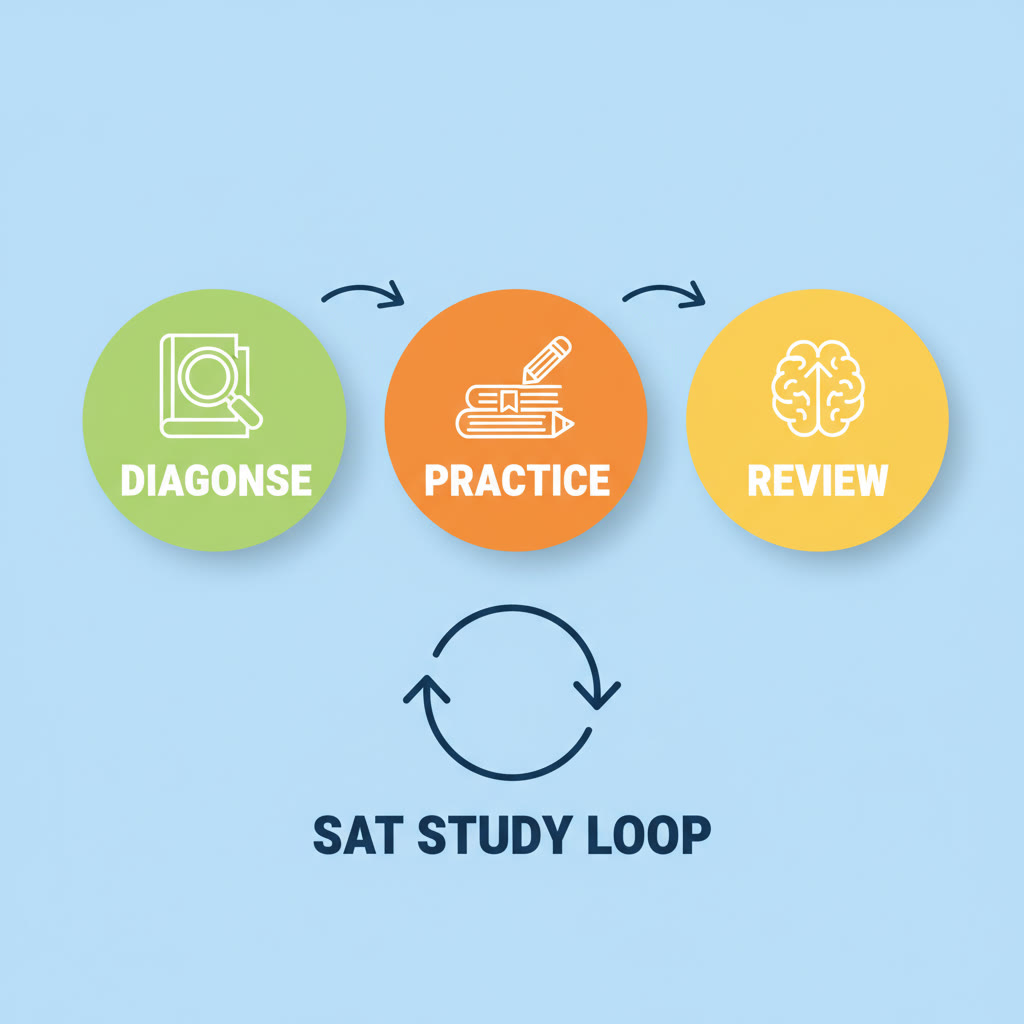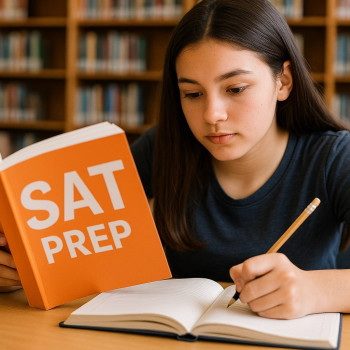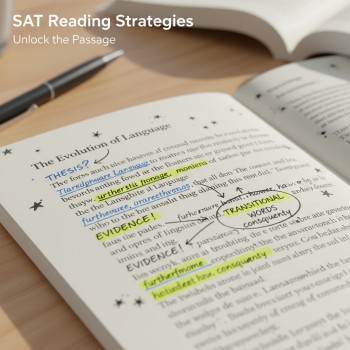Current Trends in SAT Scores Across the U.S.: A Clearer Picture for Students
If you’re preparing for the SAT, it can feel like trying to read tea leaves. Scores rise, fall, some states outperform others, and meanwhile colleges shift their admissions policies. But beneath the headlines there are consistent, meaningful patterns that can help you make practical choices: where to focus your study time, how to interpret score reports, and when to consider personalized help.
This post unpacks recent trends in SAT scores across the United States, explains what’s driving those trends, and gives realistic strategies — including how Sparkl’s personalized tutoring (1-on-1 guidance, tailored study plans, expert tutors, and AI-driven insights) can fit naturally into a smart prep plan.
Big-picture trends: What’s happening nationally
Across the last several years, three headline patterns have stood out:
- Participation has changed: More students are choosing not to submit scores to colleges or skipping the test entirely in some regions. That changes averages.
- Average scores have shifted unevenly: National averages have shown modest swings rather than dramatic, uniform movement. Local and demographic differences drive most of the variation.
- The format and delivery of the SAT are evolving: The move toward digital testing and new practice ecosystems affects access, practice habits, and — eventually — score distributions.
Participation vs. performance: why averages can be misleading
One of the most important ideas to understand is that average SAT scores are shaped by who chooses to take the test. When large numbers of students opt out — often because of test-optional admission policies — the pool of test-takers becomes smaller and, typically, more self-selecting. That tends to raise the average score, not necessarily because individual students improved, but because the remaining test-takers are often those who felt more confident or better prepared.
So when you see a headline about rising scores, ask: did more people improve, or did fewer people take the test? The answer matters for how you interpret the data as an individual student.
Regional patterns: where scores are trending up or down
State and regional variations remain a consistent feature of SAT results. Educational investment, curriculum alignment, access to test prep, and socioeconomic factors all shape these patterns. While precise numbers shift year to year, the geographic landscape usually follows recognizable contours:
- Northeast and certain suburban districts often report higher average scores, typically reflecting resource availability and extracurricular academic infrastructure.
- Rural areas and historically underfunded districts can show lower averages, where access to high-quality prep and AP-aligned coursework is more limited.
- Western and Southern states are mixed — some districts do very well, others face the same access challenges seen nationally.
Illustrative regional trends (high level)
| Region | Participation Trend | Score Trend | Notes |
|---|---|---|---|
| Northeast | Stable to slightly declining | Generally above national average | Strong public and private prep ecosystems in suburban pockets |
| Midwest | Moderate participation | Mixed; some states stable | Urban-rural split is pronounced |
| South | Variable; some declines in participation | Below to near national average in many districts | Wide socioeconomic diversity drives variation |
| West | Mixed | Mixed; pockets of high performance | Fast growth areas see shifting participation |
Note: this table summarizes broad trends rather than precise, year-specific score numbers. It’s meant to help you zoom out and understand the forces at work.
Equity gaps and the role of access
Equity continues to be a central theme. Students from higher-income families generally have more access to test prep, structured study time, and advanced coursework — all of which translate into higher average scores. Conversely, students from under-resourced schools or households often face barriers: limited tutoring options, fewer AP courses, and competing responsibilities outside school.
Several patterns are worth calling out:
- Test-optional policies have not eliminated disparities; they have merely changed who shows up on score reports.
- Access to high-quality, sustained instruction (not just last-minute tutoring) is a strong predictor of score gains.
- Digital testing can lower some logistical barriers (faster scheduling, remote practice) but can also introduce new inequities where broadband or device access is limited.
Real-world implications
For students in under-resourced settings, the test landscape can feel discouraging. But there are effective interventions that make a measurable difference: targeted tutoring, consistent practice, and access to high-quality, aligned materials. Programs that combine human coaching with intelligent diagnostics (for example, Sparkl’s 1-on-1 tutoring and AI-driven insights) can close gaps by creating individualized study plans and focusing on the highest-impact skills for each student.
The digital SAT and testing logistics: what changes mean for students
One of the most discussed recent developments is the shift toward digital test delivery. That shift affects preparation in several ways:
- Practice must mirror the test environment. Students who practice on digital platforms are better adapted to timing and navigation differences.
- Some question types and pacing can feel different on-screen, so small tactical changes (like how you mark and return to questions) matter.
- Testing centers, device access, and infrastructure can influence who benefits from the digital change.
Overall, students who adapt early to digital practice tend to be more comfortable on test day — a practical edge that can translate into points.
Why targeted preparation works better than blanket studying
If you have a finite amount of time before test day, spending it wisely is crucial. Many students fall into the trap of studying everything equally: reading passages, grammar rules, algebra review. That’s noble, but not strategic. High-leverage preparation focuses on:
- Diagnostics: identify your weakest question types and concentrated content gaps.
- Deliberate practice: do focused drills with immediate review and error analysis.
- Test strategy: timing, passage triage, educated guessing, and reducing careless errors.
Personalized tutoring — the kind that creates a tailored study plan and adjusts as you progress — compounds learning. Sparkl’s approach of combining expert tutors with AI-driven insights helps pinpoint which problem types will deliver the largest score improvements for you, not some generic student model.
Example: two students, two different plans
Imagine two students with the same starting score. One spends 40 hours randomly reviewing topics. The other spends 40 hours targeting weaknesses: focused algebra practice for 12 hours, timed reading section drills for 12 hours, and two mock tests with detailed review. The second student is far more likely to see efficient, measurable gains. That’s the power of tailored study plans.
Actionable steps: a realistic plan for the next 12 weeks
Below is a simple 12-week scaffold you can adapt based on your diagnostic results. The idea is rhythm and focus, not perfection.
| Weeks | Main Focus | Weekly Goals |
|---|---|---|
| 1–2 | Diagnostic & baseline | Take a full practice test; identify top 3 weaknesses |
| 3–6 | Foundational skills and targeted practice | Daily drills (30–60 min); two focused weekly sessions on weak areas |
| 7–9 | Timed sections and strategy | Weekly full sections under timed conditions; error log maintenance |
| 10–11 | Mock tests and review | Two full practice tests; deep review of every missed question |
| 12 | Polish and logistics | Light review, sleep and nutrition, logistics check (ID, test center), quick strategy refresh |
This plan pairs well with targeted tutoring: a coach can focus each session on the highest-leverage skills from your error log and use AI-driven diagnostics to adjust pacing.
Common myths about SAT scores — and the truth
- Myth: “Only private tutors can move your score.” Truth: Quality matters more than price. A well-structured tutoring program, even one that’s affordable and focused, can deliver big gains when it targets your specific weaknesses.
- Myth: “You can cram a family of topics in one week.” Truth: The SAT rewards sustained practice and skill-building. Short, repeated practice beats last-minute cramming almost every time.
- Myth: “If a school is test-optional, my SAT score doesn’t matter.” Truth: Optional schools still consider scores if submitted; a strong score can strengthen your application, especially if other parts of your profile need bolstering.
How to interpret trends for your own planning
Here are practical takeaways from national and regional trends that you can apply directly:
- If your state shows rising averages but fewer test-takers, don’t assume the test got easier — it may be a selection effect. Treat your diagnostic as your true baseline.
- If your district has limited local test prep, consider remote options that combine human coaching with adaptive practice — a hybrid model like Sparkl’s provides both 1-on-1 guidance and AI-driven practice recommendations.
- Adjust to digital practice early. Even if you prefer paper, knowing how to navigate the digital format reduces surprises on test day.
Practical strategies for score improvement
Here are concrete tactics that consistently help students make measurable gains:
- Keep an error log. Record every missed question, the reason (content gap, careless error, timing), and one fix to try next time.
- Master timing through repeated, timed sections. Pacing is a skill like any other.
- Do focused reading practice: summarize passages in one sentence, annotate for structure, and practice active reading to cut down on re-reads.
- Prioritize the high-yield math topics (algebra, problem solving, data analysis) — many points live there.
When to consider 1-on-1 tutoring
Tutoring can be transformative, not just for knowledge but for strategy, accountability, and morale. Consider 1-on-1 tutoring if:
- You’ve stalled after self-study and need a new approach.
- Your diagnostic shows concentrated weaknesses that would benefit from expert scaffolding.
- You want a tailored study plan that adapts week-by-week and keeps you on a consistent schedule.
If that sounds like you, a program that pairs expert tutors with AI-driven insights (like Sparkl’s) can amplify both learning and efficiency by directing you to the highest-impact practice and adjusting instruction based on real performance data.
Final thoughts: trends are useful, but your plan is personal
National and regional trends give context: they explain why certain averages move and how systemic factors influence results. But in the end, your score is determined by your habits, diagnosis, and choices. Whether you’re in a high-performing district or a place with fewer resources, you can make measurable improvements with a thoughtful plan, consistent work, and — when it fits — targeted help.
If you’re wondering where to start, take a timed diagnostic, build an error log, and set a realistic weekly schedule. If you want more structure, Sparkl’s personalized tutoring — combining 1-on-1 guidance, tailored study plans, expert tutors, and AI-driven insights — is a practical way to turn data into focused action. The right combination of human coaching and smart practice can shorten the path to your target score.


Quick checklist before test day
- Take a final full-length practice test under conditions that mimic test day.
- Review only high-impact fixes the week before; avoid last-minute content overload.
- Confirm test logistics (ID, center rules, digital device policies) and plan travel time.
- Get consistent sleep and light exercise; cognitive stamina matters more than cramming.
Wrapping up
SAT score trends across the U.S. reflect broader educational patterns: participation shifts, regional differences, and equity gaps. Those patterns matter for public policy and college admissions, but for you as a student they’re a helpful backdrop — not a determinant. With clear diagnostics, a targeted plan, and adaptive support (human-led and technology-enhanced), staying ahead of the trends is entirely within reach.
Take a breath, map your starting point, and build a plan you can sustain. If you want structured, personalized help, consider a tutoring path that blends expert coaches with intelligent practice like Sparkl’s — the combination is designed to meet you where you are and get you where you want to go.

















No Comments
Leave a comment Cancel